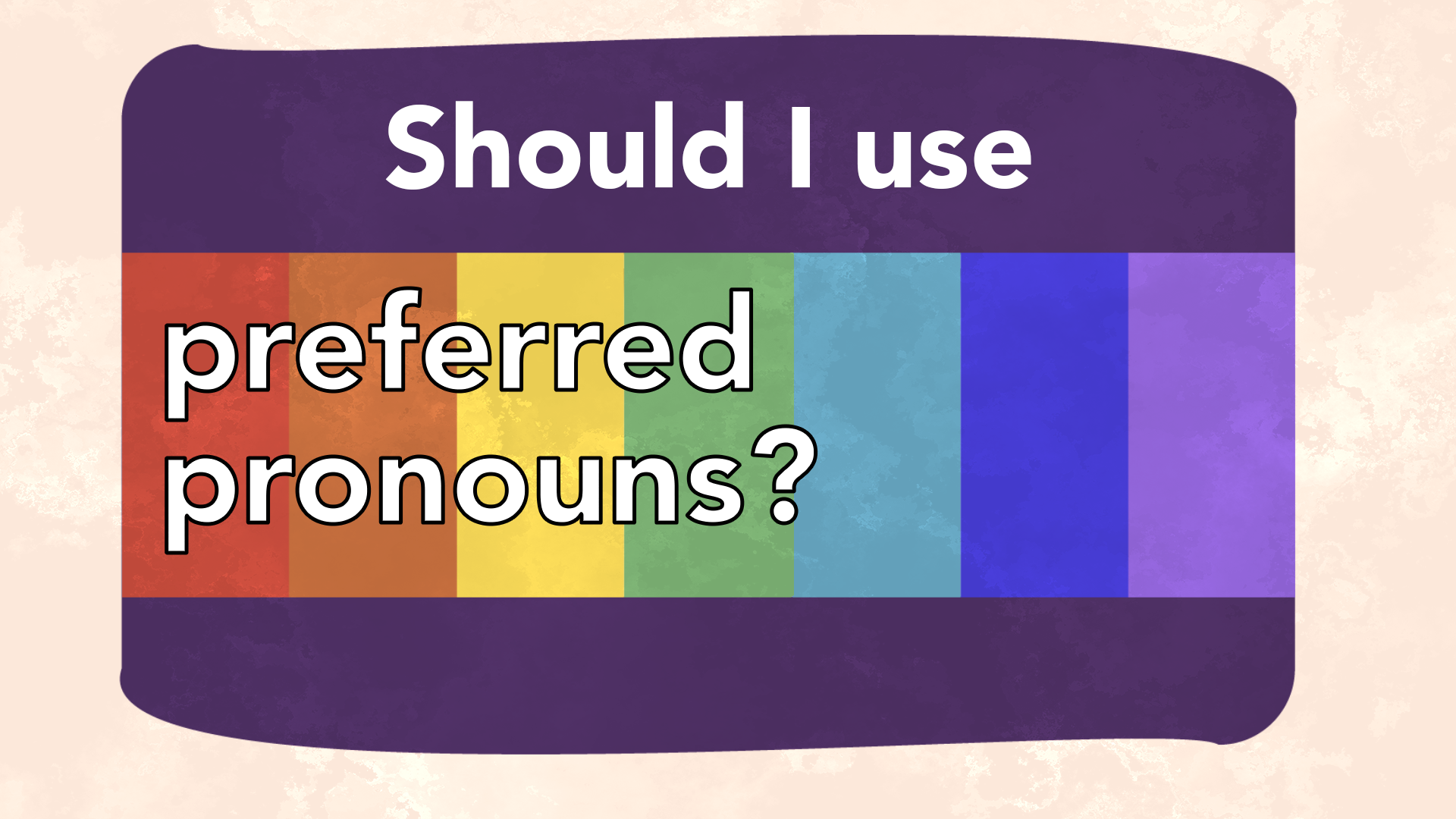You’re in a conversation and someone says, “Assisted suicide is a compassionate option for those who are suffering. If someone is in unbearable pain, they should be able to end their life on their own terms.”
What would you say?
The push to legalize assisted suicide has intensified in recent years, and it’s often framed as a merciful and compassionate option for those who suffer from unbearable physical pain.
But assisted suicide is not compassionate.
So next time someone tells you that assisted suicide is the compassionate thing to do, remember these four things:
1. Assisted suicide robs patients of compassionate care.
2. The right to die leads to a duty to die.
3. Assisted suicide ruins trust with doctors.
4. Sometimes a terminal diagnosis is wrong.
You’re in a conversation and someone says, “Assisted suicide is a compassionate option for those who are suffering. If someone is in unbearable pain, they should be able to end their life on their own terms.” What would you say? The push to legalize assisted suicide has intensified in recent years, and it’s often framed as a merciful and compassionate option for those who suffer from unbearable physical pain. But assisted suicide is not compassionate. And here are four reasons why. Number 1: Assisted suicide robs patients of compassionate care. Suicide doesn’t treat sickness, it treats depression: feelings of helplessness, fear, despair, or worthlessness that people sometimes feel. However, instead of helping people who need help the most, it kills them. Assisted suicide is often defended as a last resort to avoid unbearable physical suffering, but in practice, it is often used to deal with mental anguish, to keep people from feeling like a burden on their loved ones, or as a way to keep someone from losing their autonomy. Although assisted suicide requests, like most suicide requests, are usually based on fear and depression, 98% of people who requested assisted suicide in the state of Oregon in 2018 weren’t even evaluated by a psychiatrist before they were prescribed lethal drugs. When people are in pain, or fearful, or in mental and emotional anguish, that’s the moment we should help them, reassure them of their dignity, and use the medical resources we have to help them manage their physical pain. A lethal response is no solution at all. Assisted suicide only exchanges real care for an easy out. Oregon legalized assisted suicide in 1997. From 2000 to 2014, the state opened only 5 new hospice care facilities. During that same period, 1,832 facilities opened in the rest of the country. In the place of treatment, Oregon chose to kill. Instead of helping through palliative care or hospice, assisted suicide ends life. Assisted suicide replaces true compassion with efficiency. Which leads to the second point. (Number 2): The right to die becomes a duty to die. Once suicide becomes a legal option, patients are often pressured to choose it. Sometimes this pressure comes from the health care system. A California woman was told her insurance wouldn’t cover treatments to extend her life, but that she “would only have to pay $1.20” for drugs to end her life. Other times, pressure may come from family members who don’t want the burden of medical expenses or a reduced inheritance, or just don’t want to be inconvenienced by sick relatives. Assisted suicide can make anyone vulnerable, but its particularly dangerous for those who are already vulnerable. The Supreme Court acknowledged this risk when they said, “The risk of harm is greatest for many individuals in our society whose autonomy and well-being are already compromised by poverty, lack of access to good medical care, advanced age, or membership in a stigmatized social group.” Assisted suicide reduces life to a financial calculation, and that strips us of our humanity. Number 3: Assisted suicide ruins trust with doctors. Doctors are to be healers, but assisted suicide makes doctors an accomplice in the act of killing. This breaks trust between patients and medical professionals. Just as some people avoid doctor’s offices for fear of the Coronavirus, people in the Netherlands have expressed fear of going to the doctor because they’re afraid their life may be ended rather than treated. Generally, the law requires caregivers to remove anything that could be used by vulnerable people to commit suicide. But when assisted suicide becomes legal, a doctor provides the implements to the sick or depressed so they can take their own lives. Not only does this devalue the human person, it ignores the fact that, sometimes, doctors make mistakes. Which leads to the fourth point. (Number 4): Sometimes a terminal diagnosis is wrong. In 2013, a Swiss Suicide Clinic called Dignitas helped a 62-year-old man named Pietro D’Amico kill himself. He had been diagnosed with a life-threatening illness. However, an autopsy carried out by the University of Basel’s Institute of Forensic Medicine failed to find any trace of such an illness. Dr. Jack Kevorkian was famous for participating in the deaths of 130 people. A review of the medical records of 69 of them revealed that only 25% of those he helped commit suicide had a terminal condition. Autopsies revealed that five people he helped to kill had no significant disease at all. Nancy Crick, an Australian woman, was told she had bowel cancer. She chose to end her life by assisted suicide. However, an autopsy performed following her death found no evidence of cancer, just extensive adhesions from an old surgery. Assisted suicide is sold as a choice, but it is a choice that ends the potential for any other choices. In a world where mistakes are common, that’s a problem. So next time someone tells you that assisted suicide is the compassionate thing to do, remember these four things. Number 1: Assisted suicide robs patients of compassionate care. Number 2: The right to die leads to a duty to die. Number 3: Assisted suicide ruins trust with doctors. Number 4: Sometimes a terminal diagnosis is wrong.
For more on the reasons for requesting medical assistance in dying, see: https://www.ncbi.nlm.nih.gov/pmc/articles/PMC6135145/
For more on fear and depression-based requests for assisted suicides, see: H. Rex Greene, “Opposition to Neutrality on AB 651H,” letter to the California Medical Association (CMA) Council on Ethical Affairs, February 22, 2006, https://dredf.org/public-policy/assisted-suicide/opposition-toneutrality-on-ab-651/.
For more on assisted suicide in the state of Oregon, see: Oregon Death with Dignity Act, 2018 Data Summary, accessed March 16, 2019, https://www.oregon.gov/ oha/PH/PROVIDERPARTNERRESOURCES/EVALUATIONRESEARCH/DEATHWITHDIGNITYACT/Documents/ year21.pdf. and http://www.usccb.org/issues-and-action/human-life-and-dignity/assisted-suicide/to-live-each-day/upload/Top-Reasons-to-Oppose-Assisted-Suicide-final.pdf
For more on the case of the woman in California, see: Bradford Richardson, Assisted-Suicide Law Prompts Insurance Company to Deny Coverage to Terminally Ill California Woman, Wash. Times (Oct 20 2016) https://www.washingtontimes.com/news/2016/oct/20/assisted-suicide-law-prompts-insurance-company-den/
For more on pressures to choose assisted suicide, see:
https://www.wsj.com/articles/in-the-netherlands-the-doctor-will-kill-you-now-1500591571
For more on the Supreme Court's warning about the vulnerable, see: Washington v. Glucksberg, 521 U.S. 702, 732 (1997)
For more on the elderly's fear of going to the doctor in the Netherlands, see: https://www.telegraph.co.uk/news/health/news/8466996/Fearful-elderly-people-carry-anti-euthanasia-cards.html; https://www.dailymail.co.uk/news/article-6372385/Dutch-euthanasia-doctor-accused-drugging-elderly-woman-injecting-Hague.html
For more on the case of Pietro D'Amico, see: The Local. (2013, July 11). Botched diagnosis led to Italian’s assisted death. Retrieved from http://www.thelocal.it/20130711/medical-error-led-to-italians-assisted-suicide.
For more on Dr. Jack Kevorkian, see: Roscoe, L. A., Malphurs, M. A., Dragovic, L. J. & Cohen, D. (2000). Dr. Jack Kevorkian and cases of euthanasia in Oakland County Mich. 1990 – 1998. N Eng. J Med. 343, 1735 – 1736.
For more on the case of Nancy Crick, see: The Sydney Morning Herald. (2004, June 8). Post mortem reveals euthanasia crusader clear of cancer. Retrieved from http://www.smh.com.au/articles/2004/06/08/1086460287366.html?from=storylhs.




